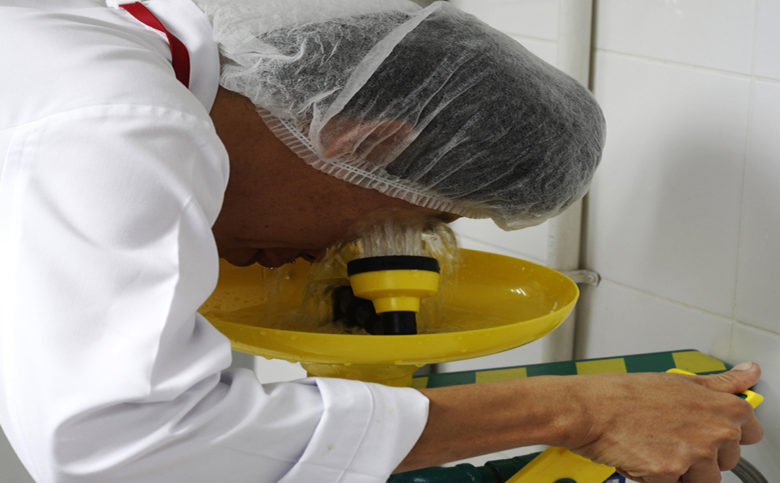There’s no question that the eyes are remarkable. In fact, our eyes are the second most complex organ after the brain, and they are made up of over 2 million working parts. So why would anyone take their eyes for granted by not using eye protection in a situation where they are exposed to a hazardous substance?
If you’ve never had to use an emergency eyewash station, you may not truly appreciate their worth. Eyewash stations are the perfect complement to eye PPE like goggles or face shields. Especially when complacency kicks in for people who work near hazardous substances regularly and have never had anything bad happen.
The OSHA requirements for eyewash stations state that “where the eyes or body of any person may be exposed to injurious corrosive materials, suitable facilities for quick drenching or flushing of the eyes and body shall be provided within the work area for immediate emergency use.” But beyond knowing that you are required to have an eyewash station, there’s still a lot of mystery behind them for most companies.
A hazard assessment must be completed to determine the types of hazards on site, the locations in the facility where eyewash stations are required and the types of eyewash or eye/face wash stations recommended. Where chemical hazards are a concern, an eye/face wash is recommended as chemicals are caustic to both skin and eyes.
An eyewash station must be obviously marked (the sign should be a symbol instead of words to avoid any language barriers) and located in a well-lit area, clear of any obstructions, on the same level and within a 10-second walk of potential exposure site. Given these requirements, it can be difficult to install plumbed stations in every necessary eyewash location.
Any eyewash station that does not provide a minimum of 15-minute continuous flushing can only be used as an immediate flushing unit to get the person to a permanent eyewash station or medical facility. But these self-contained units may be a more favorable option for many locations, as they allow for an emergency eyewash station to be closer to hazardous work areas. It’s important to note that these units are not a substitute for permanent eyewash stations, but rather they support the success of an emergency eye care system within the facility by allowing immediate care when a permanent fixture is not feasible for the hazard.
The user must be able to operate an eyewash station with one hand and in a single motion in one second or less. Once activated, the water must stay on to allow the injured party to use their hands to hold their eyes open. The water should be “tepid” (defined as a temperature between 60°F–100°F). If the water is too cold the user runs the risk of hypothermia. But if the water is too warm, it could speed up a chemical reaction. The pressure and height of the flow of water is another important element in successful eye washing.
Regular preventative maintenance is required for a successful eyewash station. Without a consistent maintenance schedule, the water could become contaminated or the unit may not function at all—which is not an option in an emergency situation. Think about all the dust and dirt that gathers that could cause an eye infection. Or a bottle of solution could be opened or tampered with if it’s left sitting for a long amount of time without inspection.
A common misconception is that if the bottle of eyewash solution is factory sealed it will stay fresh indefinitely. In reality, eventually it will turn stagnant and the bacteria growing in the bottle could cause an eye infection—or worse. A bottle of eyewash solution has a shelf life of approximately two years. It’s always a good idea to check the expiry date of the solution printed on the bottle.
Another important element of the inspection is to see if the eyewash station is being used for alternate purposes. In some cases, where a plumbed eyewash station is set up, other chemicals may be present if workers treat the eyewash station like a sink, causing the eyewash station to become contaminated. Regular flushes and cleaning will clear out any outside chemicals, ensure the water doesn’t run brown and ultimately make sure the eyewash unit is in pristine condition to clean eyes when it’s required.
When it comes to something as precious as the eyes, it is important to ensure they’re protected. An eyewash station that is not in good working order during an emergency can be detrimental to a person’s eye health. Ensure that the equipment purchased is suitable to the hazards on site, maintain the stations, and train employees on proper use and care.

